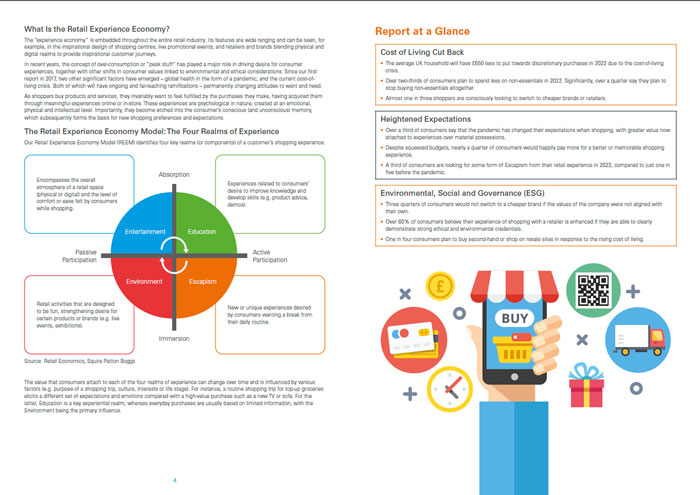Today’s retail landscape is evolving rapidly, where consumers seek more than just a transactional experience. Retailers are recognizing the importance of creating memorable shopping experiences that captivate customers and foster long-term brand loyalty. One emerging trend in the retail industry is retailtainment, the art of merging entertainment and shopping to provide an immersive and engaging customer experience.
The Concept of Retailtainment
Retailtainment originated as a response to the increasing demand for experiential retail, where consumers seek more than just products or services. This concept gained popularity in the late 20th century and has since transformed the way retailers interact with their customers.
At its core, retailtainment combines various forms of entertainment within the retail environment. This fusion creates a unique and captivating atmosphere that goes beyond traditional shopping experiences. From live performances and interactive displays to themed environments, retailtainment aims to make shopping an enjoyable and memorable event.
By implementing retailtainment strategies, retailers can benefit in numerous ways. First, it increases foot traffic to physical stores. Consumers are drawn to unique and immersive experiences, making retailtainment an effective way to attract potential customers. Moreover, retailtainment extends customer dwell time, increasing the likelihood of sales conversion.
Beyond sales, retailtainment also plays a crucial role in fostering brand loyalty. By providing memorable experiences, retailers create emotional connections with customers. These connections establish a stronger bond between customers and brands, leading to increased customer loyalty and positive word-of-mouth referrals.
Successful Retailtainment Strategies
To create impactful retailtainment experiences, retailers need to embrace innovative strategies and techniques. Let’s explore some effective approaches:
Creating Experiential Retail Spaces
The physical retail environment plays a vital role in delivering retailtainment experiences. Retail spaces should be carefully designed to evoke emotions and offer immersive experiences. Strategic placement of interactive displays, creative visual merchandising, and thematic environments can transform a store into a captivating destination.
For example, Samsung 837, the flagship store in New York City, goes beyond being a mere retail space. It offers interactive exhibits, demonstrations of cutting-edge technology, and a community space where customers can engage with the brand on a deeper level. Similarly, the Nike House of Innovation uses technology and experiential elements to create a dynamic and immersive shopping experience.
Leveraging Technology
Technology is a powerful tool in enhancing the retailtainment factor. Retailers can leverage augmented reality (AR), virtual reality (VR), and interactive screens to create engaging experiences for customers.
By integrating AR or VR, retailers can provide customers with virtual fitting rooms, allowing them to try on different outfits without physically changing clothes. Interactive screens can provide additional product information, personalized recommendations, and even enable customers to interact with the brand in a fun and unique way.
Brands like IKEA have successfully integrated AR into their shopping experience, enabling customers to preview furniture in their own homes before making a purchase. This brings a new level of excitement and convenience, transforming traditional furniture shopping into an engaging experience.
Interactive Events and Activities
Incorporating interactive events and activities can create a buzz around a retail store and generate increased customer engagement. Product demonstrations, workshops, and competitions provide customers with the opportunity to actively participate in the shopping experience.
For instance, LUSH Cosmetics often hosts workshops where customers can create their own customized bath bombs or try out new products. This interaction not only boosts sales but also leaves customers with a memorable and enjoyable experience associated with the brand.
The Impact of Retailtainment on Sales and Customer Loyalty
Retailtainment has a significant impact on both sales and customer loyalty. Let’s delve into the key benefits:

Image courtesy of via Google Images
Increased Foot Traffic and Sales Conversion
By implementing retailtainment strategies, retailers can attract more customers to physical stores. The unique and immersive experiences provided through retailtainment act as a magnet, drawing curious shoppers. This increased foot traffic translates into higher chances of sales conversion.
Moreover, retailtainment extends customer dwell time. When customers spend more time in a store, they become more likely to make a purchase. By providing engaging experiences, retailers can captivate customers for longer periods, increasing the opportunities for sales conversion.
Emotional Connections and Brand Loyalty
One of the significant advantages of retailtainment is the emotional connections it helps to establish between customers and brands. By creating memorable experiences, retailers can tap into customers’ emotions, fostering a sense of attachment and loyalty.
In an era where consumers value experiences over material possessions, retailtainment provides an avenue for brands to build strong and lasting relationships with their customers. When customers have positive emotional associations with a brand, they are more likely to become loyal advocates who continue to choose that brand over its competitors.
Positive Word-of-Mouth and Social Media Buzz
Retailtainment generates positive word-of-mouth referrals, amplifying the impact of engaging experiences. When customers have a memorable and enjoyable shopping experience, they are likely to share their positive experiences with friends, family, and even on social media platforms.
Customers today actively engage with brands on social media, sharing their experiences and opinions. Retailtainment creates unique content opportunities for both customers and brands. User-generated content promotes the brand further and encourages others to visit the store and engage in these experiences themselves.
Conclusion
In a world where consumers seek exciting and memorable experiences, retailtainment offers a powerful solution for retailers. By combining entertainment and shopping, retailers can create immersive and captivating experiences that attract customers, increase sales conversion, and foster long-term brand loyalty.
Retailtainment strategies encompass elements like experiential retail spaces, technology integration, and interactive events. Each of these strategies brings its unique benefits to the table, enabling retailers to create experiences that are novel and engaging.
As retailers embrace and harness the power of retailtainment, they position themselves as industry leaders in providing exceptional shopping experiences. By unlocking the power of retailtainment, retailers can differentiate themselves in a competitive market, ultimately driving growth and success.



